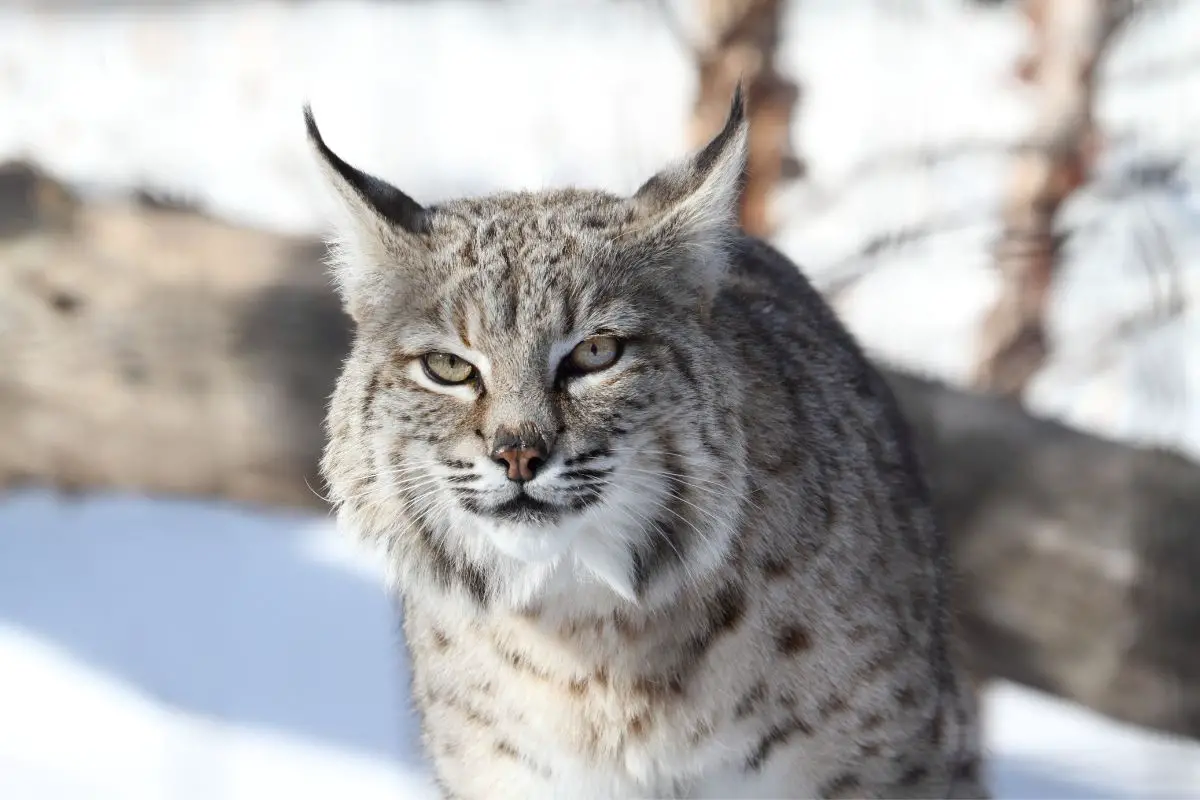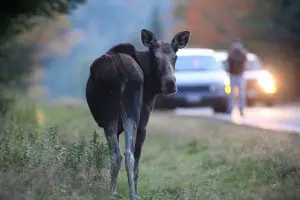When it comes to New Hampshire, there are loads of different wild animals all across the state.
Whether it’s a wide range of different types of fish, amphibians like the mudpuppy and the bullfrog, or even a range of snakes, there’s plenty of variety in the wilds.

On top of that, there are various threats like wolves, bobcats, and coyotes in the mountain areas and forests.
Speaking of the bobcat, New Hampshire is also home to another type of lynx: the Canada lynx. These are particularly unique and endangered species that it’s important to be aware and respectful of.
What are they? What do they look like and where do they tend to live?
I’ve got all the answers in my useful guide below! If you read on, you’ll find out all about the presence of lynx in New Hampshire, as well as information about their appearance, habitats, diet, and much more. Read on!
Can You Find Lynx In New Hampshire?
There are typically two different types of lynx that are in New Hampshire. One of these is the bobcat, known by its scientific name “Lynx rufus”.
You’ll probably have heard of bobcats before, because they are the most common type of wildcat in all of North America. As a result, it’s not too surprising that you’ll be able to find them in New Hampshire.
Much more rare, though, is the “Canada lynx”, which is the other type of lynx that you’ll find in New Hampshire. These are an endangered species in the state, meaning that they are in risk of dying out.
There was once a breeding population in the north of New Hampshire, but this ceased to be in the 1950s, and their population has struggled ever since.
Everything You Need To Know About The Bobcat In New Hampshire
I’m going to break down all the key facts about both types of New Hampshire lynx, beginning with the bobcat.

What Does A New Hampshire Bobcat Look Like?
A bobcat will typically have a thin face and tufted ears, with black lines present. You’ll find that their fur looks red-brown or yellow-brown, but in the winter months they take on more of a gray appearance.
Like their face, there are lots of dark streaks and spots all over their body, including at the top of their legs.
They get their name from their “bobbed” tail, which is stubby and will be between 4 and 7 inches long. It has a white underside, which is fitting when they’re in the snow, but the rest of it has a few black bars.
What Is The Habitat Of A Bobcat?
A bobcat will tend to make its habitat in forests, either broken or scrubby. You might also find them in arid locations that are heavy in bush or rocks, as well as farmland, scrubland, and swamps.
You may even find them in semi-deserts. This means that in New Hampshire they’ll most likely be in the forest areas and swamps. Scrublands are rare in the area.
The bobcats will make their dens in all kinds of places. For example, they might live in brush piles, stumps, or even hollow logs. You might also find them on rock ledges, too, or in caves.
They like to mark their territory, and they can do this by scraping part of the surroundings – for example, you might find a mark of theirs on a nearby tree. On top of that, they also use feces and urine to mark their land.
What Does A Bobcat Eat?
In terms of their diet, a bobcat can vary between easy prey and larger, harder to kill animals. For the larger threats, they will intelligently use their environment to their advantage.
For example, in the winter they might use the large amounts of snow to help them surprise and overcome a white tailed deer (coincidentally, the state animal of New Hampshire).
As for the small animals, these don’t take nearly as much effort. As a result, a bobcat is able to eat lots of different creatures: moles, raccoons, mice, foxes, birds, squirrels, skunks, and reptiles, to name a few.
If they’re ever running low on food, a bobcat is able to fast for a while.
What Is A Bobcat’s Life Cycle?
When it comes to mating, a male bobcat will be sexually active throughout the year. Female bobcats, on the other hand, will often only be in heat for two months, around February and March.
Once a pair has mated, there is a period of just 2 months where the babies grow, before the female bobcat gives birth around April or May. They give birth to a litter of around 2-3 kittens, but the numbers can increase.
Everything You Need To Know About The Canada Lynx In New Hampshire
New Hampshire’s other type of lynx is the Canada lynx, which differs in key ways to the bobcat.

What Does A Canada Lynx Look Like?
These rare lynx have thick fur, but it can be either gray or light brown. There will be light black spots dotted all over it. Its ears are large, and it has a black-tipped tail that’s short.
The Canada lynx’s legs are long and they have large paws on the end, the size of which allows it to move through the snow more easily.
What Is The Habitat Of A Canada Lynx?
When it comes to picking where they live, a Canada lynx will often go for coniferous forests. They like to live deep within them, often near to areas with swamps and bogs, or areas that are rocky.
In New Hampshire, they have also reportedly been seen in the White Mountains, favoring snowy areas.
As I said earlier, the Canada lynx is an endangered species in New Hampshire, meaning that they are at risk of dying out. As a result, there are trapping regulations enforced in the north of the state, in order to protect the lynx.
What Does A Canada Lynx Eat?
A Canada lynx has a very different diet to a bobcat, and that’s largely because of their snowy habitats. This means that around ¾s of their diet is the snowshoe hare.
However, outside of these they will also feed on carrion, birds, and meadow voles. Occasionally, they might also eat larger prey, such as deer.
In order to catch their prey, a Canada lynx will climb trees and wait at night.
What Is A Canada Lynx’s Life Cycle?
When it comes to mating, it’s the male Canada lynx that will follow the female. They mate at the start of the year, around February and March, and then the female will give birth to a litter two months afterwards.
The litter could contain anywhere between 1 and 6 kittens, and they stay with the mother for a year.
Are These Lynx Dangerous?
You should always keep well away from all lynx, including both bobcats and Canada lynx. Though they often avoid people, they can attack if threatened, and would be severely dangerous.
Final Thoughts
New Hampshire has two types of lynx: bobcats and Canada lynx. They differ, especially in the fact that Canada lynx is an endangered species.



